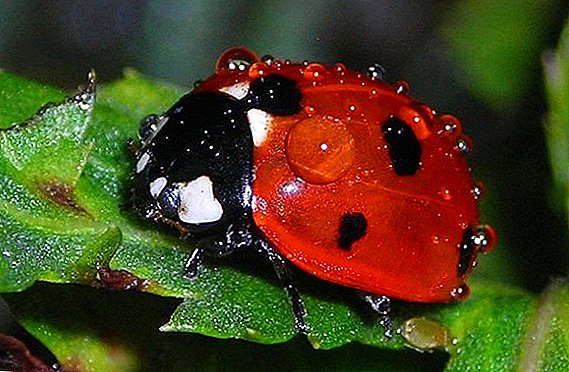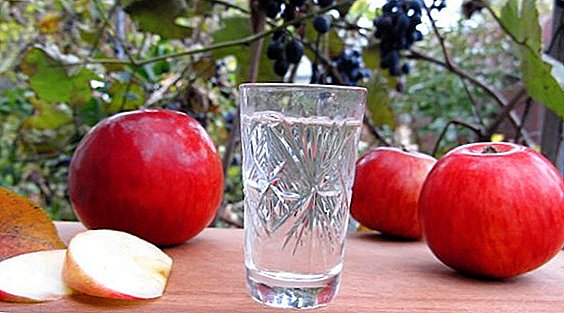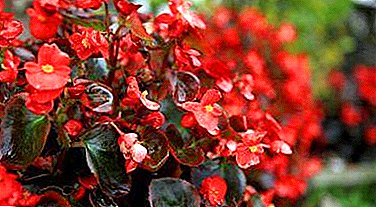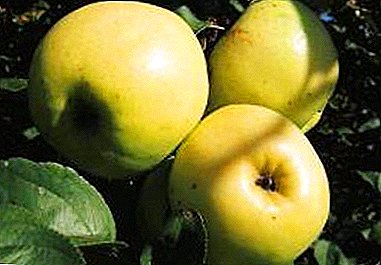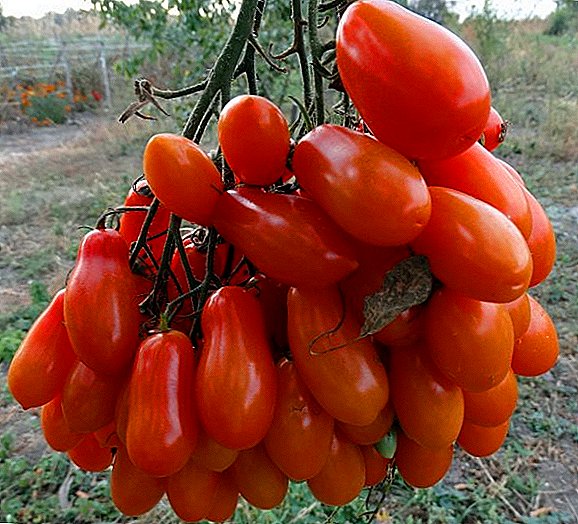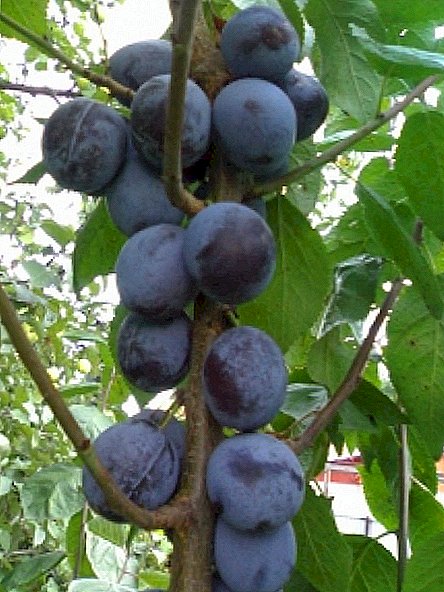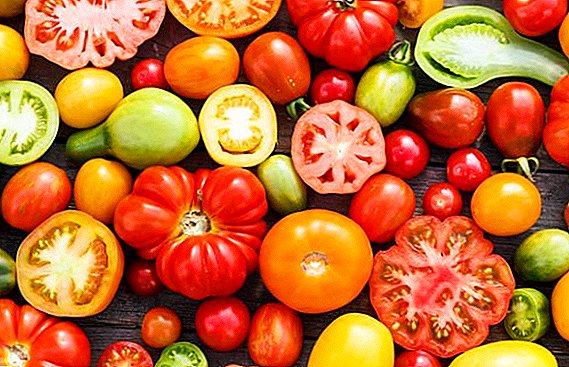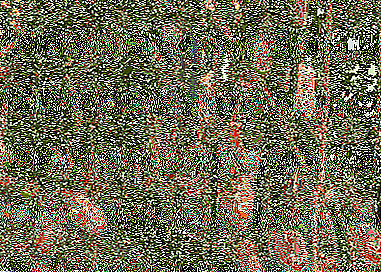
Tomato variety Moscow pear is well-known to gardeners and farm workers in Russia. In 2001, the tomato was introduced into the State Register of Russia. Recommended for cultivation in small farms and in private farms.
In our article you will find not only a complete description of this variety, but also be able to get acquainted with the peculiarities of cultivation and the main characteristics.
Tomato "Moscow pear": description of the variety
 Bush plants determinant. Universal cultivation. Average terms of ripening. When planting in a greenhouse can reach a height of 95-105 centimeters. When grown in open ground is much lower, about 45-55 centimeters.
Bush plants determinant. Universal cultivation. Average terms of ripening. When planting in a greenhouse can reach a height of 95-105 centimeters. When grown in open ground is much lower, about 45-55 centimeters.
Experienced gardeners do not recommend planting more than five shrubs per square meter. Tying a plant is required. The best result in terms of yield (up to 4-5 kilograms) is achieved when a bush is formed by 3-4 stems.
Fruit characteristics:
- The fruits are well-marked pink.
- Meaty to the touch.
- Possess a good, distinct tomato flavor.
- Weight from 180 to 220 grams.
- The shape is very reminiscent of the fruits of Bulgarian pepper.
Almost the same size makes tomatoes ideally suitable for salting, as well as for various winter preparations. Very good presentation and high safety during transportation are indisputable advantages of this variety tomato.
A photo



Features of growing
 It is advisable to feed by applying nitrogen fertilizers. To do this, in autumn, when digging the ground to a depth of about 25 centimeters, add dry roots and leaves of lupine, which are rich in nitrogen. When rotting, it will give away nitrogen to the planted plants. Sowing seeds for seedlings, according to gardeners, it is best to produce 45-55 days before the intended planting.
It is advisable to feed by applying nitrogen fertilizers. To do this, in autumn, when digging the ground to a depth of about 25 centimeters, add dry roots and leaves of lupine, which are rich in nitrogen. When rotting, it will give away nitrogen to the planted plants. Sowing seeds for seedlings, according to gardeners, it is best to produce 45-55 days before the intended planting.
Disinfect seeds in a solution of potassium permanganate. The solution is prepared at the rate of 10-12 grams of potassium permanganate per liter of water. Soak the seeds for 25-30 minutes, rinse and lightly dry. Sprout seeds in wet gauze. Planted to a depth of about 2.0-2.5 centimeters, trying not to thicken the landing, which can lead to excessive stretching of plants. When sprouts appear, you can feed with complex fertilizer such as Sudarushka, precisely following the instructions.
If it is impossible to purchase complex fertilizers, it is quite possible to replace them with wood ash, which is paid at the rate of 100-150 grams per square meter of soil. When 2-3 true leaves appear, plant the plants, aligning them with the pick. This is necessary to increase the growth of the plant root.
After the soil is heated to a temperature of at least 15 degrees Celsius, plant the seedlings at the rate of no more than 5 bushes per square meter. Water with warm water, under the root of the plant. Avoid dropping on the leaves. It is advisable to water after sunset.
Diseases and pests
Viral mosaic. Pretty unpleasant disease. The leaves acquire a characteristic marble mosaic, which may appear as spots on the fruit. The best way out is to remove the plant with a radical clod of earth.
Macrosporia. Another name is brown spot. Fungal disease affecting the leaves and stem of the plant. Fruits are less likely to be damaged. It spreads quickly at high humidity. As a measure of struggle, experienced gardeners advise spraying with antifungal agent containing copper. For example, the drug "Barrier".
Vertex rot. This disease affects only tomatoes. Manifested as a depressed brown spot on the top of the fruit. Most often occurs on soils with a lack of calcium. As a measure to prevent disease, it is possible to recommend the introduction of a handful of shattered eggshell into each well before planting.


